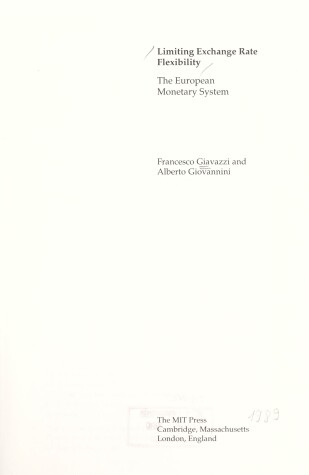Events of recent years have exacerbated the dissatisfaction with the performance of flexible exchange rates, and prompted a number of proposals to limit exchange rate fluctuations among industrialized countries. This book provides the first in depth analysis of the European Monetary System (EMS), the only lasting experiment of this kind.The book's careful blend of theory and empirical analysis supports the view that, in Europe, nominal exchange rate targets have had significant real effects. Its detailed description of European economic institutions shows why exchange rate fluctuations are perceived as especially harmful.Giavazzi and Giovannini explain the institutional features of the EMS and describe how central banks run the system in practice. They offer an illuminating analysis of European capital controls and show how such regulations have guaranteed the survival of the EMS in a period characterized by unprecedented dollar fluctuations.The authors point out the lessons to be drawn from this experience with the EMS for the more general problem of reforming the international monetary system. Their forceful arguments are backed by analysis of such important issues as the determinants of international capital flows and international portfolio diversification, and the role of credibility and expectations in disinflation.Francesco Giavazzi is Professor of Economics at the University of Bologna. Alberto Giovannini is Associate Professor at the Columbia University Graduate School of Business.
- ISBN10 0262071169
- ISBN13 9780262071161
- Publish Date 11 August 1989
- Publish Status Out of Print
- Out of Print 28 February 2001
- Publish Country US
- Publisher MIT Press Ltd
- Imprint MIT Press
- Format Hardcover
- Pages 244
- Language English
